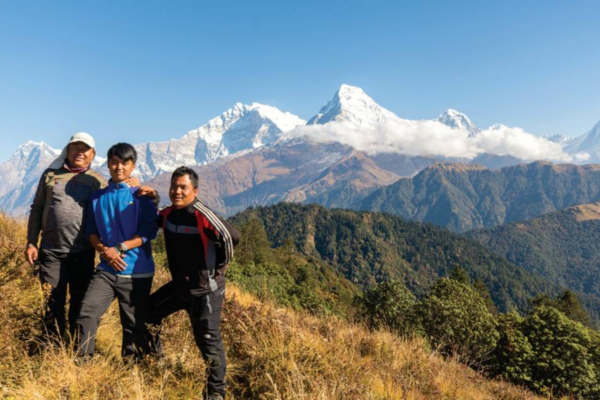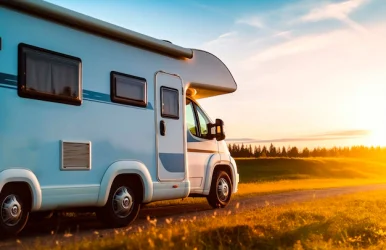6 Things To Know Before You Visit St. George
BY Arnab May 23, 2023
Imagine waking up to the sight of radiant red cliffs against a clear blue sky, the thrill of walking in the footsteps of dinosaurs, the taste of unique local dishes, and the serene ambiance of historic pioneer buildings. It isn't a dream; this is St. George, Utah. Nestled in the state's southwest corner, St. George is a vibrant city that merges natural beauty with rich history and culture, all wrapped up in a warm, inviting community. Boasting a sunny climate all year round, it's no wonder this desert gem is a favorite among travelers. What makes St. George a must-visit destination? Let's embark on this exciting journey together to uncover the many charms of this delightful city. The Natural Splendor of St. George St. George, a mecca for nature lovers, is a gateway to Utah's majestic national parks - Zion and Bryce. The awe-inspiring landscapes of these parks, with their dramatic cliffs, expansive plateaus, intricate canyons, and the ever-changing hues of the sky, are a sight to behold. Every sunrise and sunset, painting the red rocks with gold and pink shades is a spectacle. Don't miss the star-studded night sky that will make you feel one with the universe. In addition to these national parks, St. George is home to the surreal Snow Canyon State Park, where you can marvel at petrified dunes and old lava flows. This park is a perfect spot for adventurers for hiking, mountain biking, rock climbing, or even horseback riding. Birdwatchers and wildlife enthusiasts will find it equally enthralling to spot the native species in their natural habitat. After an action-packed day, St. George vacation rentals offer an ideal retreat with home-like comfort and a hint of luxury. Dive into History and Culture History is there in every corner of St. George. This city has borne witness to times as ancient as the age of dinosaurs and as recent as the era of pioneers. Start your journey back in time at the St. George Dinosaur Discovery Site. You'll find real dinosaur tracks preserved in stone, fossilized remains, and informative exhibits that give a sneak peek into the prehistoric era. Continue your exploration at the Pioneer Courthouse, one of the oldest standing buildings in the city. This courthouse showcases the city's architectural prowess and offers insights into the administrative setup of the past. Nearby, the Brigham Young Winter Home provides a glimpse into the lifestyle of the pioneers. However, cultural exploration doesn't stop at history. St. George also boasts a vibrant arts scene with numerous art museums, galleries, and music festivals. Attend a live performance at the Tuacahn Amphitheatre or visit the numerous art galleries scattered throughout the city. Delving into the Culinary Delights of St. George Food in St. George is more than a necessity. There are several traditional dishes along with recent culinary delights. Hence, St. George caters to every palette. You will come across the authentic flavors of the Southwest, fresh farm-to-table meals, along with locally-made pastries for the sweet tooth. You can enjoy an amazing coffee culture and various breweries to relax in. St. George offers local cooking classes and food tours. Hence, you can learn more about its culinary history, meet local chefs, and pick up some new cooking tricks. Experiencing the Heart of St. George: The Community The heart of St. George lies not just in its natural beauty or historical landmarks but in its warm and welcoming community. It is a city where people greet each other with smiles, community celebrations are a way of life, and strangers quickly become friends. From farmers' markets bursting with fresh produce and locally made crafts to festivals that bring the streets to life with music, dance, and food, there's an infectious sense of community spirit. Wander through the city's historic downtown district, where local shops offer everything from unique handicrafts to stylish clothing. Many family-owned shops reflect the city's commitment to preserving its heritage while embracing the new. And as you explore, take the time to chat with the locals – their stories, tips, and warm hospitality add an unforgettable personal touch to the St. George experience. This spirit of friendliness extends to local businesses too. Whether it's a café owner remembering your coffee preference or a shopkeeper recommending their favorite hiking trail, the people of St. George make you feel at home in their city. Practical Information: What You Need to Know When planning your trip, it's essential to consider that St. George enjoys a unique desert climate. With mild winters perfect for exploring and hot summers ideal for water-based activities at Sand Hollow State Park, there's never a bad time to visit. The city is also well connected by road. It has its airport, making it easily accessible no matter where you're coming from. And while St. George is generally safe, it's always good to take the usual travel precautions like keeping your belongings secure and aware of your surroundings, especially when exploring the more secluded natural areas. Familiarize yourself with local laws and customs to ensure a smooth and enjoyable trip. For instance, understanding the etiquette for visiting historical sites and local businesses can help you connect better with the local culture. Responsible Travel: Respecting and Preserving St. George Lastly, let's not forget our responsibility as travelers to respect and preserve the places we visit. St. George is a city that thrives on its natural beauty and community spirit, and we must ensure that these remain untouched. Following simple, sustainable travel practices, like carrying a reusable water bottle, exploring the city on foot or by bike, or even participating in a local cleanup drive, can help reduce our environmental footprint. Be mindful of the natural habitats you visit, and remember to leave no trace behind. The wildlife and natural surroundings are vital to St. George's charm, so let's ensure our interaction with them is respectful and minimally invasive. Remember to use marked trails, maintain a safe distance from wildlife, and never remove natural objects from parks. Supporting local businesses is another great way to practice responsible tourism. Whenever you dine at a locally owned restaurant, shop at a local boutique, or hire a local guide, you contribute to St. George's vibrant community spirit and economy. Conclusion: Prepping for Your St. George Adventure As we wrap up our virtual tour, we hope you're as excited about visiting St. George as we are about sharing it with you. From its captivating landscapes and rich history to its diverse food scene and warm community, St. George is a destination that promises memorable experiences at every turn. Remember, the best trips are those that not only entertain but also educate and inspire. So, pack your bags, book your St. George vacation rental, and get ready to create some unforgettable memories. The red canyons, dinosaur tracks, delectable meals, and friendly locals of St. George are all waiting to share their stories with you. Here's to happy travels and exploring the unexplored! Read Also: Tips To Make Your Vacation In Gatlinburg More Enjoyable The Blue Train: A Luxurious Expedition Across South Africa Top 5 Best Camping Spots In The United States













